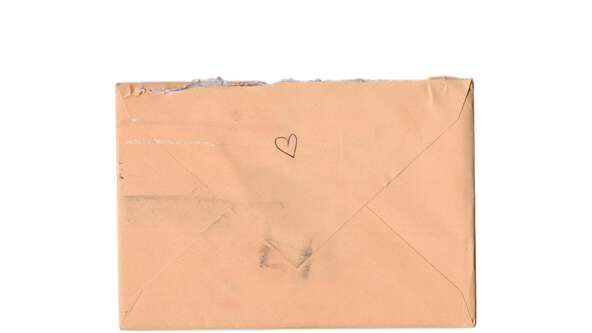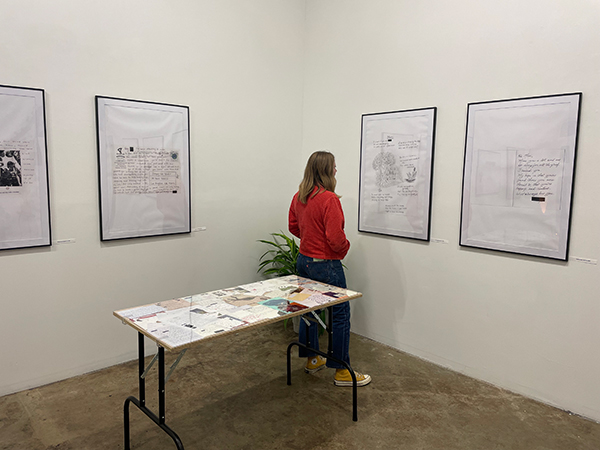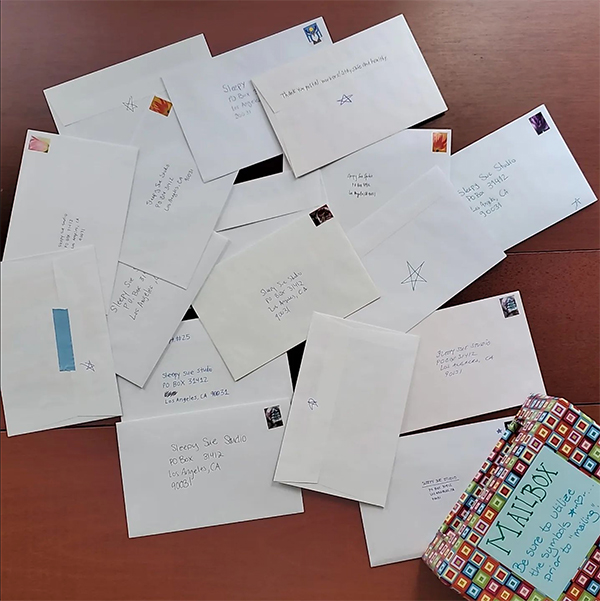L.A. Artist and Archivist Celebrates Year of ‘Postal Service for the Dead’

When Janelle Ketcher was just 15, her mother was diagnosed with frontotemporal dementia. Quickly, and for the next ten years, her words faded away.
"It (dementia) can always look a little different, but for my mom, her ability to verbalize in the way that we are talking with each other today, she lost that pretty quickly,” Ketcher shared with Tulip Cremation. “It really pushed us into other forms of communication -- a lot of music, a lot of dancing. For the last ten years of her life, I wasn’t able to communicate with her in the way I do with everyone else.”
An ‘Urgent’ Idea
A few years after her mom’s death near what would have been her 68th birthday, Ketcher bolted awake with an idea. She felt a strong urge to send her mom a birthday card. “It was a very in-the-moment idea,” she said. “It felt very urgent.” Ketcher went online to see if there was someone or something that could help her do that. She wanted to do more than write a letter that she would not send, an activity often recommended as a tool in grief therapy. But Ketcher wanted to take that a step farther, to stamp and mail the card, dropping it into a mailbox or driving it to the post office.
Finding no option online, she decided to create her own project she dubbed “Postal Service for the Dead.”
Her project invites cards and letters that she collects at a P.O. box and serves as a “receptacle” for people’s complex feelings after the loss of a loved one.
Honoring the Space for One-Way Communication
Ketcher says her project creates a space that honors the one-way communication inherent in sending a letter to someone who has died.
“Obviously, this is a one-way communication. You are sending something out and hoping that it’s received, (depending on) whatever fits your beliefs.”
By taking the action of mailing a card or letter, Ketcher believes the participants can weave their expression into their everyday experience, rather than keeping grief work in a separate time and space. For her, that’s one of the things that sets it apart from other grief letter writing.

Inspiration from Other Projects
Ketcher was inspired by some similar projects like the Wind Phone where people can communicate with lost loved ones on a disconnected landline phone, and Post Secret which encourages participants to anonymously share their secrets by mail. She set up Facebook and Instagram accounts so she could spread the word on the project. Letters marked with a star on the envelope mean they are “OK” to share. In this way, she creates a community with the letters. Senders also can mark the envelope with a heart, which indicates the letter can be read but not shared publicly. If people want to keep the letter completely private, the envelope is unmarked.
Ketcher is a graduate of the Kansas City Art Institute in Missouri, works as a library clerk and has received death doula training from Going with Grace. She brings together all these facets of her experience together with the Postal Service for the Dead project. She is interested in both the artistic and archival value of what she receives. While some letters will never be opened, they will be archived “in community” with the others.
How it Works
Letter writers are asked to put a star on letters they are OK with sharing, a heart on those that Ketcher and her team can read but not share, and they are told to leave the back of envelopes blank on those that they want to keep private.
Ketcher has received letters and postcards from all over the country and a few international ones. Some are postcards, some are collages, some are ornate, and others are plain.
A Tool, Not a ‘Cure’
She explains that her service is not a “cure” for grief but a tool that helps the writers tap into hard-to-reach spaces. “All forms of creative expression allow us to tap into parts of ourselves that are harder to tap into. Writing is a creative form. It really does allow people to feel safe and express themselves.”
Her hope is that by giving people a place to send their letters, she is “taking the load off.” Some who have written to her and shared their letters have expressed that they had been writing to their lost loved one for years but had experienced a lot of anxiety in the process before they had a physical place to send the letter. By having an actual address to send the letter to, the writers have expressed that they had a sense of relief in sending them.
“I hope that people get out of it a sense of either relief or release or connection either with the person they lost or knowing that other people are feeling and trying to express things, too.”

Where to Send Your Letters
If you’d like to send a letter to the Postal Service of the Dead, be sure to mark it with a star, heart, or leave it blank:
Sleepy Sue Studio
PO BOX 31412
Los Angeles, CA 90031